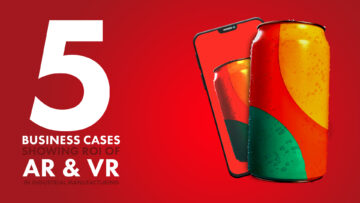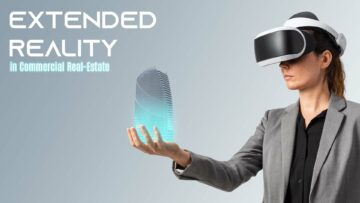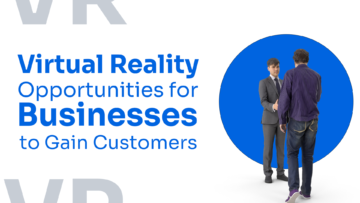
From One Product Needing the Efforts of Multiple People,
To a Single Machine Manufacturing Products with Minimal Human Intervention,
We Humans have come a long way. It is now time for the fourth industrial revolution or Industry 4.0, where the focus will be on improving the quality and quantity of production, and more importantly completely eliminating or significantly reducing human intervention in production.
Some examples of technology being enabled by Industry 4.0 are 3D Printing, Computer Aided Mass Manufacturing, Computer Aided Quality Assurance and so on.
To enable this, we need top notch systems that can assist the process of Quality Control, Quality Improvement and Manufacturing in General. Here are some examples in which Augmented Reality acts as an enabler of effective industrialization, particularly under the ambit of Industry 4.0.
AR Enabled Inspection and Quality Assurance
Aeronautical Manufacturers such as Boeing and Airbus, and Medical Device Manufacturers spend over a Billion Dollars Annually on Quality Control.
A small mistake can cause considerable damage to the product, leading to catastrophic problems. TO avoid this, organizations invest heavily in quality control. When this process is automated through AR, it makes the process considerably more inexpensive and precise.
For instance, in Boing, fitters wear AR powered glasses that show them the dimensions of components (to the tune of microns) in real time. They also use advanced imaging technology to identify cracks and faults and notify the inspection personnel of the same. This process cut down assembly and inspection time by over 80% and yielded Immense benefits of the organization.
Support for Assembly Operations
The shop floor and assembly line are the backbones of any organization. For the product to ultimately live up to its mark, it needs to be created with utmost precision on the shop floor. Precision equipment manufacturers can use AR enabled Apps to correct flaws before they exacerbate, thereby improving quality control and reducing flaws.
For instance, in a factory that involves multiple parts being fitted or assembled together to create a final part, the shop floor workers may get confused from time to time. However, by enabling an AR App that provides step by step instructions, and gives feedback in the case of an error, they can avoid assembling products the wrong way, and even assembling products that have low quality components. This in turn considerably improves the output of the production line, and ultimately adds credibility to the organization.
AR Enabled Optimization
Every organization involves multiple operations, working on several functions. Optimizing these functions and their output with respect to demand and existing data is the need of the hour. For instance, if an organization has manufacturing, sales and customer service departments, models can be built based on existing data available and on market trends. This can be used in conjunction with AR to improve business outcomes.
For example, in an organization if employees manufacture 1000 gears, when they sell only 900 a day, or have spare stock, the combination of AI and AR base monitoring will inform the employees that they already have surplus stock, and perhaps even tell them to work on some other assignment based on the need, thereby optimizing material, time and money.
Training of Professionals
In the past, employees had to spend time working on machines to get the hang of performing particular operation or process. However, in today’s world employees can learn to operate machines through AR based simulations, which will help the user get a feel of the machine, even before they actually lay their hands on a machine.
Also, packaging the training and delivering it in an AR enabled manner has immense benefits for the organization. It saves trainer time and lets new users understand the process of using the machine without having to worry about damaging the machine.
Visualization with AR
With the power Computer Aided Design and Augmented reality, anyone can view the form and function of any object, and even simulate different conditions using the virtual model of the object. This can be used to refine the product using a virtual prototype, in lieu of a resource intensive physical prototype.
The Time for Industry 4.0 is Now!
The fourth Industrial Revolution is here, and it is about time we pull up our socks and join the bandwagon. Enabling your organization with AR offers immense benefits to all the stakeholders of the organization.
The range of industrial applications that can leverage AR is vast. From using AR to detect faults at the micrometer level in printed circuit boards, to using AR enabled satellite images for manufacturing, we have indeed come a long way in enabling Industry 4.0.
The industry 4.0 Market is soaring and will hit a high of $165 Billion in the next 5 years. It is now time to join this industry that offers a growth rate of over 20.8% and use it to your advantages.
References:
- https://www.qualitymag.com/articles/96416-how-augmented-reality-can-support-industry-40
- https://www.iiot-world.com/industrial-iot/connected-industry/the-key-role-of-augmented-reality-in-industry-4-0-for-manufacturing-part-1/
- https://www.sciencedirect.com/science/article/abs/pii/S0736584518304101
- https://www.vsight.io/adoption-of-augmented-reality-in-industry-4-0/
Subscribe
You May Also Like
Source: https://augray.com/blog/augmented-reality-an-enabler-for-industry-4-0/
- &
- 39
- 3d
- 3D Printing
- AI
- All
- Annually
- app
- applications
- apps
- AR
- Augmented Reality
- Augray
- auto
- Automated
- B2B
- Billion
- Boeing
- business
- Cause
- construction
- content
- COVID-19
- COVID-19 pandemic
- Customer satisfaction
- Customer Service
- data
- day
- delivering
- Demand
- Design
- digital
- digital marketing
- dollars
- Effective
- employees
- equipment
- extended reality
- factory
- flaws
- Focus
- form
- fourth industrial revolution
- function
- General
- glasses
- great
- Growth
- here
- High
- How
- How To
- HTTPS
- Humans
- ICON
- identify
- Imaging
- industrial
- Industrial Revolution
- industry
- IT
- join
- Key
- leading
- LEARN
- Level
- Leverage
- Line
- Long
- Machines
- manufacturing
- mark
- Market
- Market Trends
- Marketing
- medical
- medical device
- model
- money
- monitoring
- Offers
- Operations
- Other
- packaging
- pandemic
- People
- Personnel
- physical
- Posts
- power
- Precision
- Product
- Production
- Products
- quality
- range
- Reality
- resource
- restaurant
- Restaurants
- retail
- sales
- satellite
- sell
- small
- So
- spend
- stock
- Systems
- Technology
- time
- top
- Training
- Trends
- users
- View
- Virtual
- vr
- Work
- workers
- world
- years














